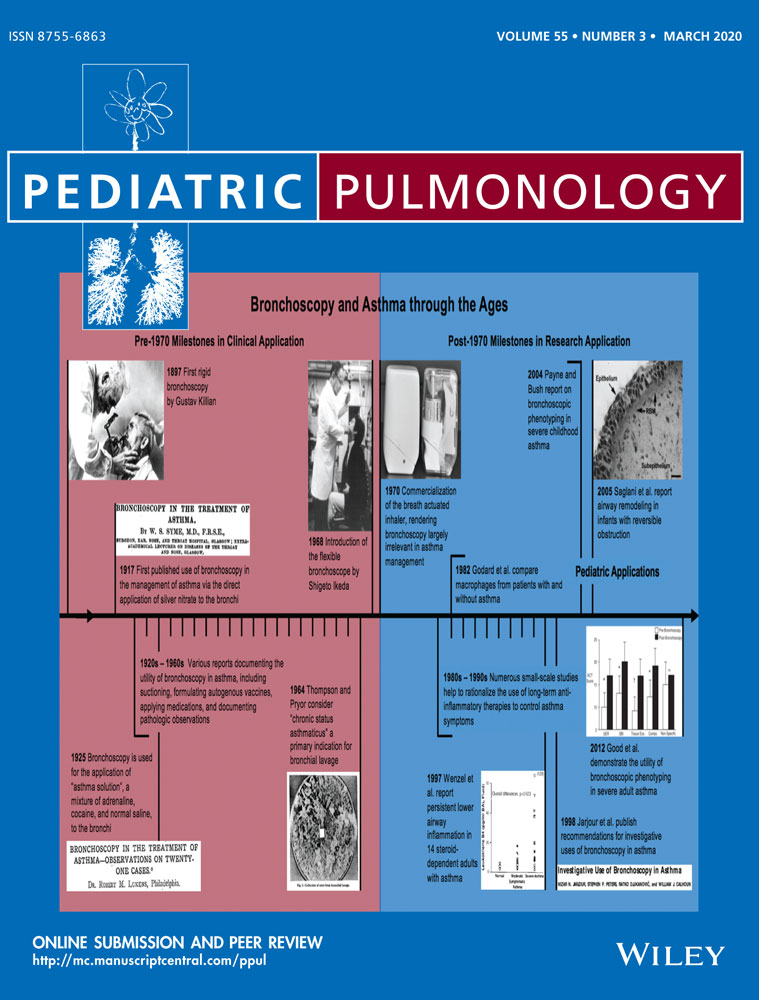Concurrence of elevated FeNO and airway hyperresponsiveness in nonasthmatic adolescents
Abstract
Objectives
The aim of this study was to investigate airway responsiveness and eosinophil and neutrophil inflammatory markers in clinically confirmed nonasthmatic adolescents with elevated fractional exhaled nitric oxide (FeNO), a marker of type-2 inflammation in the airways.
Methodology
A total of 959 subjects from a general population, aged 12 to 15 years, answered a standardised questionnaire and underwent FeNO measurements at a screening visit at school. Adolescents without asthma, who had elevated FeNO (FeNO100 > 15 ppb) (n = 19), and control subjects, with low FeNO (FeNO100 < 5 ppb) and without reported symptoms of asthma or allergy (n = 28), participated in a follow-up study where FeNO50, airway responsiveness to methacholine (PD20), blood eosinophil counts, and serum neutrophil lipocalin (HNL) and myeloperoxidase (MPO) levels were measured. Questionnaire follow-ups were performed 4 and 16 years later.
Results
Airway responsiveness (PD20: 6.94 [1.87, 11.39] vs 11.42 [6.33, 59.4] µmol; P < .05) and blood eosinophil counts (0.31 [0.20, 0.44] vs 0.13 [0.1, 0.22] 109/L; P < .001) (geometric mean [95% CI]) were higher among cases than controls. A significant correlation between blood eosinophils and FeNO was found (rho = 0.41; P = .005). In contrast, serum HNL and MPO were lower in cases than controls (P < .05 both), and there was a negative correlation between HNL and FeNO (r = −0.31; P = .04). At both follow-ups, a higher proportion of subjects reported allergic symptoms compared with baseline (P = .02, P = .01).
Conclusions
Elevated FeNO in nonasthmatic adolescents was associated with airway hyperresponsiveness, elevated blood eosinophil counts, and lower systemic activation of neutrophils.




